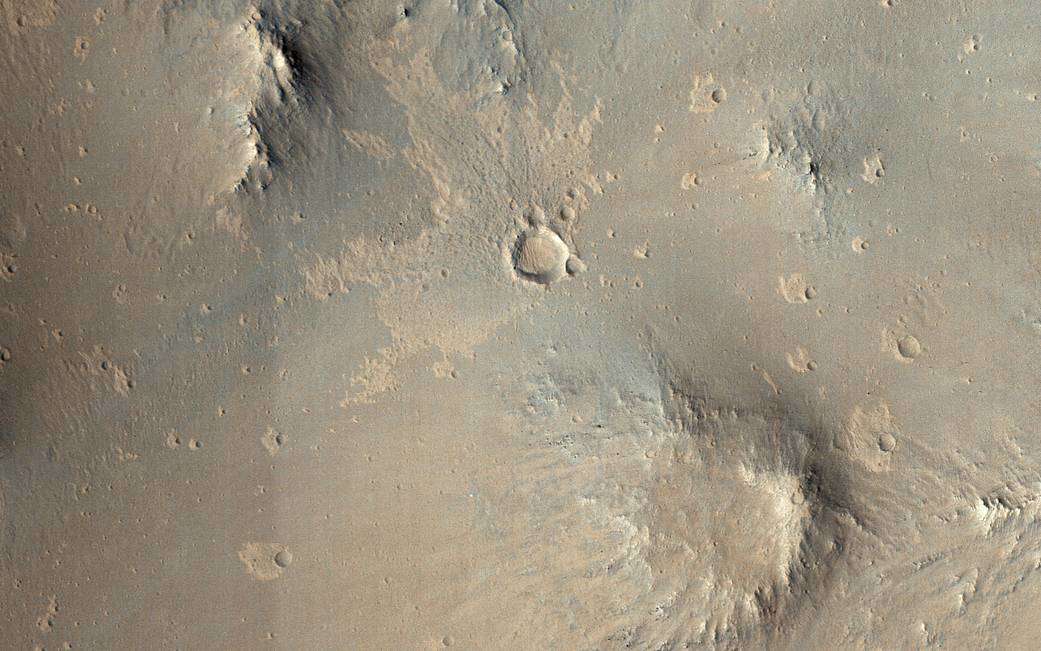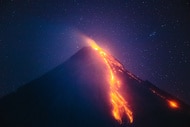Create a free profile to get unlimited access to exclusive videos, sweepstakes, and more!
Size matters, which might be why Mars has no life

“You can’t sit with us,” Regina George’s infamous quote from Mean Girls, evidently goes for planets, too, but this clique doesn't wear pink on Wednesdays.
Planets that want any chance of being habitable should be able to hold on to enough surface water so life (at least as we know it) can survive. Mars is thought to have once had rivers and lakes — rock samples recently picked up by Perseverance are showing evidence that Jezero Crater, where it is crawling around, was once a massive lake. The problem is that Mars couldn’t hang around the habitable planets because it was a loser... of water.
What morphed into a frozen reddish wasteland is now thought to have turned inhospitable because it was too small to keep liquid water and other volatiles on the surface. Planetary scientist Kun Wang of Washington University in St. Louis co-authored a study, recently published in PNAS, that seeks to prove this through potassium isotopes found in Martian meteorites.
“The isotopic compositions of potassium is an index of volatile depletion,” he tells SYFY WIRE. “We used a potassium isotope tracer to show that Mars started out drier than Earth (less volatile-rich). Because of this, Mars, even the wetter early Mars, had no equal chance like our Earth to enable life.”
Volatiles are substances that vaporize easily, like water. How volatile a substance is depends on how fast it can vaporize. Potassium is moderately volatile, but when exposed to oxygen in the atmosphere, it turns into potassium peroxide vapor. Wang and his team measured 20 Martian meteorites that fell to Earth, which ranged from millions to billions of years old, by using potassium isotope tracers that are actually the ratio of potassium-41 (K-41) over potassium-39 (K-39). The compositions of these isotopes indicate how fast volatiles escaped Mars.
The isotope K-39 is lighter than K-41. Meaning, K-39 moves faster, fast enough to beat Martian escape velocity, the lowest velocity possible to escape the gravity of a planet or other body. Being more massive, Earth has more gravity and a higher escape velocity than Mars. Higher ratios of K-39 to K-41 told the researchers that more K-39 was lost during the era a particular meteorite was from. Any planet with a high ratio is giving away that it lost high amounts of volatiles. So much for the theory that early Mars had more volatiles than young Earth.
“The correlation between isotope compositions of potassium and planet surface gravity (determined by mass) means the smaller the bodies, the more volatiles have been lost,” Wang says. “This has been always expected; we were just the first to show this relationship with real data.”
Past measurements used a potassium-to-thorium (K-Th) ratio to find out how volatilization levels, but there were things that method missed. It was superficial like Regina George. If used through a remote sensing method, such as a spectrometer, it would only measure the K-Th ratio on the surface of Mars, while the K-39 to K-41 ratio measures meteorites that came from deeper inside the planet. It was also shallow like Regina. Results would be inconclusive if other processes messed with it. The K-39 to K-41 ratio method is not screwed up so easily.
There is another thing Mars wasn’t able to hold on to. Because it has no inner dynamo and therefore no magnetic field, its atmosphere was mercilessly blasted by solar winds and other space radiation for billions of years. Nearly no atmosphere means no protection from killer radiation. While there is no doubt that was involved in the inevitable destruction of what was once a potentially habitable planet, including the disappearance of life-sustaining water and other volatiles, the research carried out by Wang’s team showed that it was not the only reason.
“Most likely, Mars lost its volatiles during its formation stage (possibly through Magma Ocean), which is very fast when compared to its entire life,” he says. “Nevertheless, Mars is also losing volatiles through atmosphere being stripped slowly and continuously — a secondary effect compared to the initial loss.”
So Mars can’t sit with the habitable planets, and it doesn't wear pink, but at least it’s red(dish). Close enough.














